It took me just about 15 minutes to drive to the South Oropouche Lagoon (SOL) on Independence Day. Birdwatchers and other naturalists occasionally visit from north Trinidad and even further afield from North America and Europe. For human beings such a journey might seem trivial, but for many non-human inhabitants the journeys which led them to this swamp are much more interesting. Through human influence or under their own power, the swamp is now home to several foreign plant and animal species.
Driving through the drier agricultural areas of the SOL it is possible to find the Common Waxbill (Estrilda astrild). The waxbill is native to the African continent but it is a popular cage-bird in the pet trade.
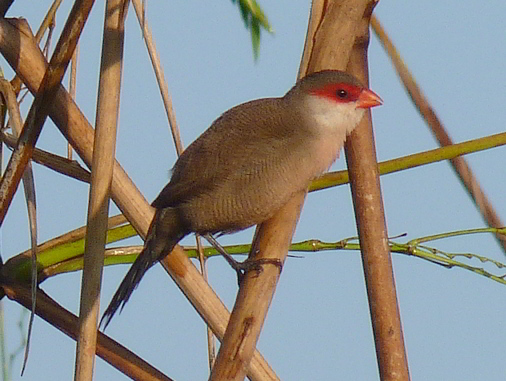
This popularity eventually led to birds either escaping or being deliberately set free and feral populations are now established in Europe, Hawaii, Bermuda and Brazil. The bird was first detected in the Orange Grove area of Trinidad in 1990 (Hayes and White 2000) and has slowly made its way south. By 2008 it was detected in the SOL.
Also in these agricultural areas of the SOL it is possible to find the Tri-coloured Munia (Lonchura malacca). With their large ivory bills, these large attractive finches bear a superficial resemblance to the familiar ‘bullfinch’ or Chestnut-bellied Seed-Finch.
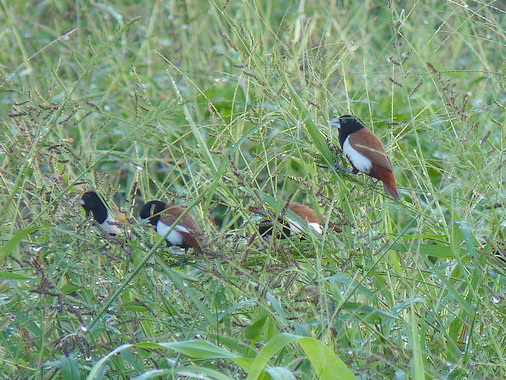
The munias are native to Sri Lanka and India but it is popular as a cage-bird and feral populations of escaped/released birds have become established in Cuba, Jamaica, Puerto Rico and Venezuela. They were found to be living in the SOL in 2008. Given their similarity to the ‘bullfinch’, my own suspicion is that munias were smuggled across from Venezuela with the expectation that they shared the latter’s ability to sing. The Tri-coloured Munia is however a dreadful songster and was probably liberated soon after this realization.
My intention that morning was to try to photograph a Gray-breasted Crake and for this I chose a dry grass-field that had been cleared by fire in the recent past. Crakes usually respond well to audio playback of their calls and after a few minutes a crake briefly popped its head out of the grass before disappearing again. I thought that it would reappear for sure and soon there came a rustling from the bushes nearby. It wasn’t a crake that emerged but yet another foreigner – the Indian Mongoose (Herpestes javanicus).

As most readers would probably know, the Indian Mongoose was brought across to the Caribbean from South Asia in an attempt to control the snakes and rats that inhabited the cane-fields. It would hard to say what effect they had on their intended prey but the mongoose did not limit themselves to cane-field pests. They ate small birds, eggs, nestlings, small mammals, small reptiles and amphibians alike. No doubt it was attracted to the sound of the crake and had intended to make a meal of it.
I figured that with a mongoose in the area I should try my luck elsewhere. As I approached another dry field I inadvertently flushed this Upland Sandpiper (Bartramia longicauda) from the short grasses (unlike many sandpipers, the Upland Sandpiper favors dry ground).
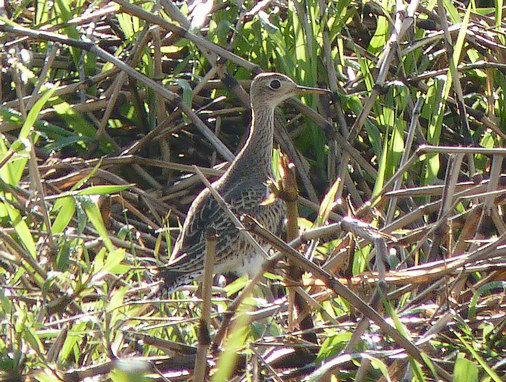
No escapee from a cage this time, the Upland Sandpiper is a long-distance migrant flying all the way from as far north as Alaska and migrating every year to South America, venturing as far south as Argentina. Besides the Upland Sandpiper, there are approximately 40 other migrant bird species that visit the SOL yearly.
And while a routine migration over such a distance is amazing, the SOL was also the destination of at least one even more amazing albeit accidental journey. As reported in a previous post, a Glossy Ibis (Plegadis falcinellus) had been found feeding here in July 2008. The bird had a band on its leg that was eventually traced back to Donana National Park in Spain, nearly 6,000 km away. Such a journey is facilitated by the prevailing NE trade winds which can drive a bird straight to the Caribbean. It is of course a one way trip for these birds with no way of flying against the trade winds to get back home.
Returning home might be a tactic employed by another feathered traveler. That morning I came across this large flock of Black-bellied Whistling-Ducks (Dendrocygna autumnalis) in the swamp consisting of at least 40 individuals.

The population of these ducks has benefited from the breeding programme at the Pointe-a-Pierre Wildfowl Trust. However these ducks had to have come from somewhere as they were not in the area a few months ago. Alternatively, they might have been breeding deep within the Godineau Swamp or even the nearby Rousillac Swamp. Another possibility is that the local population is supplemented by birds dispersing from the Venezuelan mainland.
If the latter is true then the ducks might recognize a fellow Venezuelan marsh dweller amongst the vegetation.
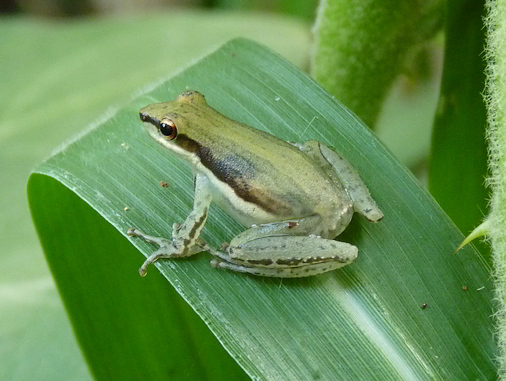
The small frog Scarthyla vigilans was recorded in Trinidad only in July 2010 (Murphy 2011:pers. comm). This frog was first thought to be endemic to the Maracaibo Lake basin in Venezuela (Rojas-Runjaic et al 2008). Apparent range expansions resulted in several other populations being established in northern South America. It is however not likely to be a recent arrival in Trinidad but was probably overlooked previously or misidentified as another frog. I only recently learnt of its presence but its characteristic day-time vocalizations make it easy to identify. It seems to be established in suitable habitat over much of south Trinidad.
Other foreigners lurk in these waterways. The Three-spot Gourami (Trichogaster trichopterus) was discovered in the SOL in 2009 (Mohammed et al 2010).
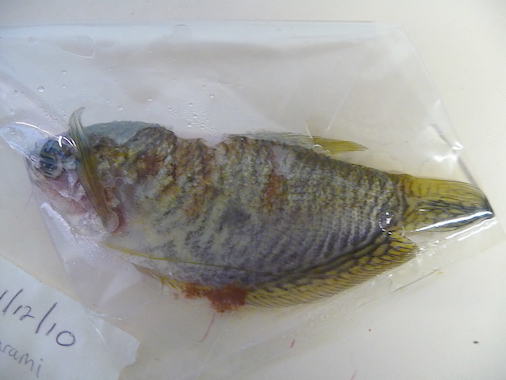
The dead individual pictured above was removed from the stomach of a Guabine (Hoplias malbaricus) by researchers studying the Gourami population. It is native to the Mekong Basin in South East Asia but is very common in the international pet trade and is a popular aquarium fish in Trinidad & Tobago. Needless to say, some individuals either escaped or were released into the SOL or one of its tributaries.
Another aquatic invader is the Malaysian Prawn (Macrobrachium rosenbergii) which was documented in the SOL in 2005 (Rostant 2005; Mohammed et al 2011).
Last but not least, there is even a foreign plant species that has escaped into the SOL. Limnocharis flava is a freshwater plant native to Asia.
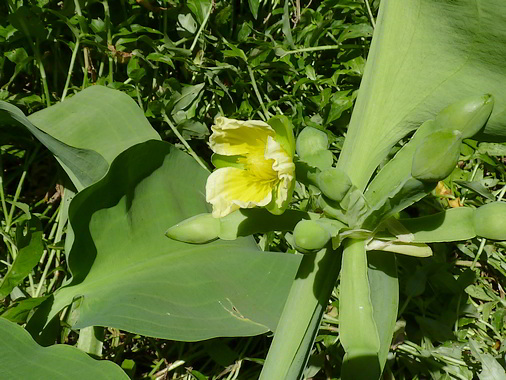
This plant has also spread to parts of the United States and South America. It is edible and was possibly introduced to Trinidad as a food plant or as an ornamental for artificial ponds. Alternatively, seeds might have also been accidental transported in imported rice seeds or agricultural equipment.
In preparing this article I was myself surprised by the number of non-resident species present in the South Oropouche Lagoon. For better or worse many of these species will eventually be regarded as part of our flora and fauna. Despite their diverse origins I suppose our national anthem says it all – “Here every creed and race find an equal place”. It would seem that this applies to the wildlife as well.